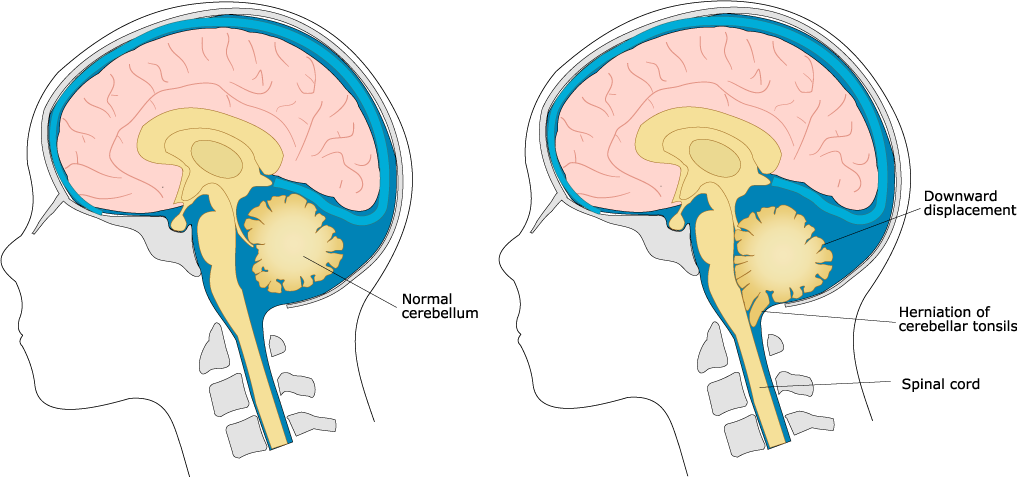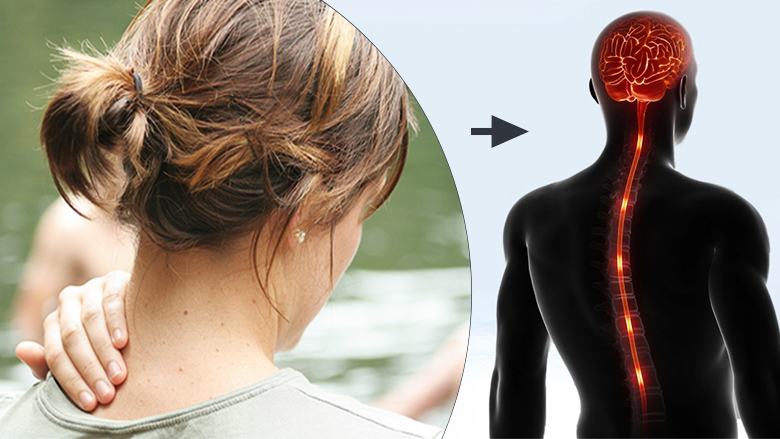
A Chiari Malformation is anatomically described as cerebellar tonsillar ectopia below the level of the foramen magnum. In other words, the cerebellum has descended to a level where it should not exist. It is a pediatric condition, however, it is often diagnosed in late adulthood, given the manifestation of symptoms at a later age and the various ways in which it can present clinically.
Common symptoms?
Chiari Malformations present with a variety of symptoms. The most common symptom is an occipital headache that worsens with position or with a bowel movement. Other associated symptoms are tinnitus and chest pain. Given the tonsillar ectopia and its compression upon the brainstem, it can result in dysphagia, uvula deviation, and other symptoms of cranial nerve compression.
What other medical conditions is it associated with?
It is often associated with a syringomyelia, also called a syrinx, which is a fluid filled cystic cavity in the spinal cord. This forms due to disruption in CSF flow secondary to the ectopia of the cerebellar tonsils. Clinically, patients may have scoliosis on physical exam. Symptomatically, this presents as loss of pain and temperature sensation in the upper extremities.

Types of Chiari

Diagnostic
The diagnostic modality is MRI imaging. MRI Brain will show the cerebellar displacement. Your provider may request additional imaging of your spine with a MRI, if there is concern for a syrinx.
Treatment
Treatment for Chiari 1 Malformation usually entails a decompressive surgery. This can include an occipital craniectomy, duraplasty, and laminectomy, depending on the amount of CSF obstruction. This essentially means that a piece of the bone near the back of the head will be removed along with another layer, called the dura, that lies below the skull and acts as a protective covering for the brain. This will free up more
space in the brain, such that the cerebellum will have more space to sit in the skull, helping relieve compression of the cerebellum.
Care Team
The care team will involve the Neurosurgeon, Neurologist, Radiologist, Anesthesiologist, PCP, and most importantly, whoever you call your support team, whether that be your friends or family!